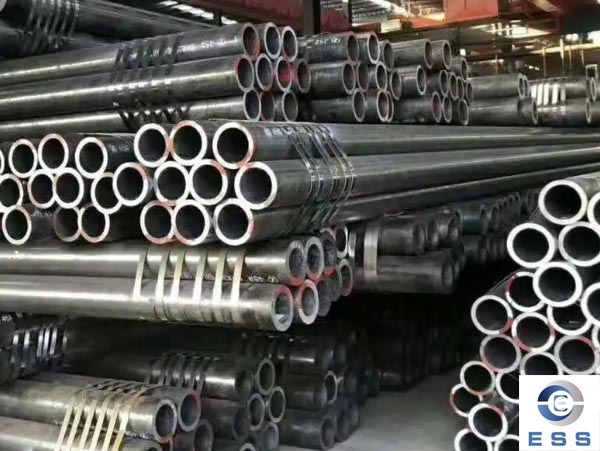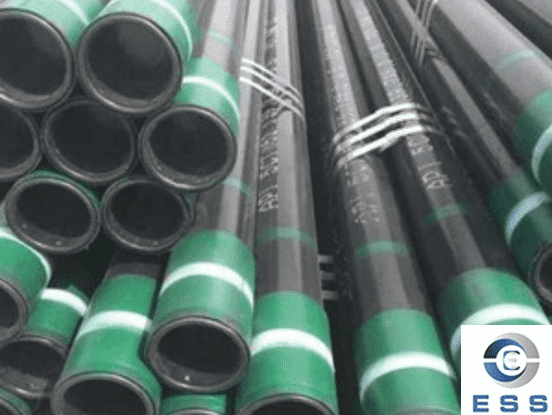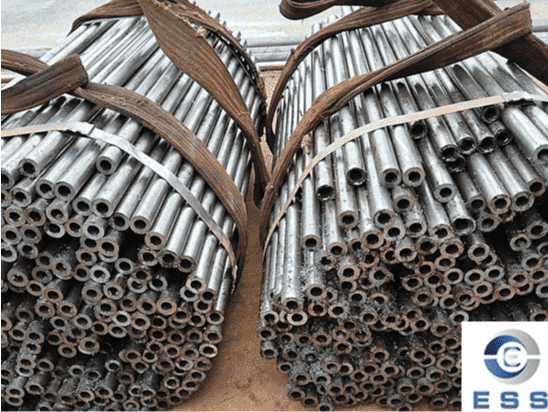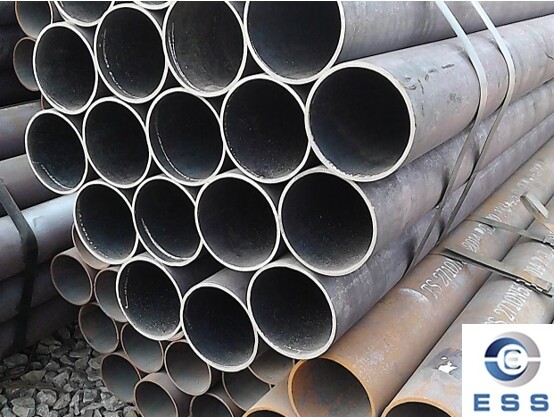The uneven wall thickness of
seamless steel pipes is mainly reflected in the phenomenon of spiral uneven wall thickness, linear uneven wall thickness, and thick and thin wall thicknesses at the head and tail. The influence of continuous rolling process adjustment is an important factor leading to the uneven wall thickness of the finished pipe. Specifically:
1. Helical wall thickness is uneven
Causes:
1) The uneven wall thickness caused by adjustment reasons such as the uneven rolling center line of the piercer, the inclination angle of the two rolls or the too small amount of reduction in front of the plug is generally distributed along the entire length of the steel pipe in a spiral shape.
2) During the rolling process, the uneven wall thickness caused by premature opening of the centering roller, improper adjustment of the centering roller, and jitter of the ejector rod are generally distributed in a spiral shape along the entire length of the steel pipe.
Measures:
1) Adjust the rolling center line of the piercing machine so that the inclination angles of the two rolls are equal, and adjust the rolling mill according to the parameters given in the rolling table.
2) For the second case, adjust the opening time of the centering roller according to the speed of the capillary outlet, and do not open the centering roller too early during the rolling process to prevent the ejector from shaking and causing uneven wall thickness. The opening of the centering roller needs to be appropriately adjusted according to the change of the diameter of the capillary, and the amount of the capillary runout should be considered.

2. Linear uneven wall thickness
Causes:
1) The height adjustment of the mandrel pre-piercing saddle is not suitable. When the mandrel is pre-pierced, it contacts the capillary on a certain side, which causes the temperature of the capillary to drop too fast on the contact surface, resulting in uneven wall thickness and even concave defects.
2) The roll gap of continuous rolling is too small or too large.
3) Deviation of the center line of the tube rolling mill.
4) Uneven reduction of single and double racks will cause linear symmetry deviation of ultra-thin (ultra-thick) steel pipe in the direction of single-rack and ultra-thick (ultra-thin) in the direction of double racks.
5) The safety mortar is broken, and the difference between the inner and outer roll gaps is large, which will cause the straight line asymmetric deviation of the steel pipe.
6) Improper adjustment of continuous rolling, the rolling of piled steel and drawn steel will cause uneven wall thickness in straight lines.
Measures:
1) Adjust the height of the mandrel pre-piercing saddle to ensure that the mandrel and the capillary are centered.
2) When changing the pass and rolling specifications, the roll gap should be measured to keep the actual roll gap consistent with the rolling table.
3) Use the optical centering device to adjust the rolling center line, and the center line of the rolling mill must be corrected during the annual overhaul.
4) Replace the frame with broken safety mortar in time, measure the inner and outer roll gaps of continuous rolls, and replace them in time if there is any problem.
5) During continuous rolling, steel drawing and stacking should be avoided.
3. Uneven wall thickness of head and tail
Causes:
1) The inclination of the front end of the tube blank, the excessive bending, and the incorrect centering hole of the tube blank are likely to cause uneven wall thickness of the steel tube head.
2) When piercing, the elongation coefficient is too large, the roll speed is too high, and the rolling is unstable.
3) The unstable steel throwing of the piercer can easily cause uneven wall thickness at the tail of the capillary.
Measures:
1) Check the quality of the tube blank to prevent the front end of the tube blank from being cut inclination and the amount of reduction is large, and the centering hole should be corrected for hole pattern replacement or maintenance.
2) A lower piercing speed is used to ensure the stability of rolling and the uniformity of the capillary wall thickness. When the roll speed is adjusted, the matching guide plate is also adjusted accordingly.
3) Pay attention to the use state of the guide plate and increase the inspection of the guide plate bolts, reduce the movement of the guide plate during rolling, and ensure the stability of the steel casting.













 Eastern Steel Manufacturing Co.,Ltd not only improve product production and sales services, but also provide additional value-added services. As long as you need, we can complete your specific needs together.
Eastern Steel Manufacturing Co.,Ltd not only improve product production and sales services, but also provide additional value-added services. As long as you need, we can complete your specific needs together.










